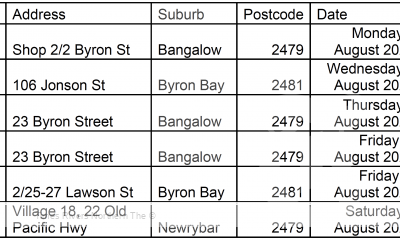Get Your Garden Ready for Warmer Weather
By Liam Jennings
As the days grow longer and the temperatures rise, gardeners everywhere feel the urge to head outside and prepare their gardens for the warmer months. Spring is the perfect time to give your outdoor space a fresh start, whether you’re nurturing a vegetable patch, tending to a flower garden, or simply beautifying your yard. Preparing your garden now ensures that it will thrive in the coming season and helps set the stage for a bountiful summer.
Here are some essential tips for getting your garden ready for the warmer weather.
Clean Up and Clear Out
Before you can plant new seeds or tend to your perennials, you need to clear away the remnants of winter. Start by removing any dead plants, weeds, and debris that have accumulated over the colder months. Dead leaves, fallen branches, and spent annuals can harbor pests and diseases, so it’s important to clear them out to create a clean, healthy environment for new growth.
Once the garden beds are clear, take a moment to prune your perennials and shrubs. Deadheading spent blooms and cutting back dead stems encourages healthier growth and prevents the plant from wasting energy. Pruning is especially important for rose bushes, hydrangeas, and other flowering plants that benefit from a good trim before the growing season begins.
Revitalise the Soil
After a season of dormancy, your garden’s soil needs attention. The cold, wet conditions of winter can leave soil compacted and depleted of nutrients. Start by loosening the soil in your garden beds with a fork or spade, which helps improve aeration and drainage. You might also want to add organic matter like compost, leaf mould, or well-rotted manure to improve soil structure and replenish nutrients.
Testing your soil’s pH can also be a good idea, as certain plants thrive in more acidic or alkaline conditions. If your soil is too acidic, adding lime can help balance it, while sulphur can lower the pH if it’s too alkaline.
Fertilise Early for a Strong Start
Fertilising in spring gives your plants the nutrients they need to grow vigorously throughout the warmer months. Different plants have varying nutritional needs, so consider using a slow-release fertiliser for general garden use, or choose a specific fertiliser designed for the types of plants you’re growing.
Organic fertilisers like compost or seaweed extracts are a great way to feed your plants while also improving the soil’s health. For flower gardens, you can add a balanced fertiliser that provides nitrogen, phosphorus, and potassium to encourage lush foliage and blooms. For vegetable gardens, opt for a fertiliser rich in nitrogen, which promotes leaf and stem growth, while phosphorus helps with root and fruit development.
Planting and Sowing
Spring is the ideal time to plant, whether you’re starting from seeds or transplanting seedlings. Hardy annuals and cool-weather vegetables like peas, spinach, and lettuce can be planted early in the season, while more tender plants like tomatoes and peppers should wait until the soil warms up.
For flower gardens, now is the perfect time to plant summer bulbs such as dahlias, gladiolus, and lilies. These plants will produce stunning blooms as the season progresses, adding vibrant colour and texture to your garden. Be mindful of the growing conditions of each plant and ensure that they are placed in the right spot—sun-loving plants should go in sunny locations, while shade-tolerant varieties should be placed in more sheltered areas.
If you’ve been dreaming of a herb garden, spring is the perfect time to start planting your favourite herbs. Parsley, basil, rosemary, and thyme thrive in warm weather and will be ready to harvest in the summer months.
Mulching Matters
Mulching is one of the best ways to protect your garden from the heat of the summer while helping your plants thrive. Adding a layer of organic mulch around your plants helps retain moisture, suppress weeds, and regulate soil temperature.
Choose a mulch that suits your garden’s needs—compost, wood chips, straw, or bark mulch are all excellent choices. Apply a 5-7cm layer of mulch around your plants, being careful not to pile it too close to the stems or trunks, as this can cause rot.
Mulching also helps improve the soil over time as it breaks down, adding valuable organic matter back into your garden beds.
Irrigation Preparation
Warmer weather means your plants will need more water to stay hydrated. Spring is the perfect time to check your irrigation system or hose setup to ensure it’s working efficiently. Make sure your hoses are free from leaks and consider setting up a drip irrigation system to deliver water directly to the roots of your plants, where it’s needed most.
Watering early in the morning is best during warmer months as it allows the plants to absorb moisture before the heat of the day evaporates it. Aim for deep, infrequent watering to encourage deeper root growth.
Pest and Disease Control
With warmer weather comes an increase in pests and diseases. Keep an eye out for common garden pests like aphids, slugs, and snails, which can cause damage to tender new shoots. Consider using organic pest control methods, such as introducing beneficial insects like ladybugs, using neem oil, or setting up physical barriers like copper tape to deter slugs.
Inspect your plants regularly for signs of disease such as powdery mildew, rust, or leaf spot. Early detection is key to preventing the spread of disease, and removing affected foliage can help keep the problem under control.
Plan for Growth
As your garden springs to life, don’t forget to plan for future growth. Staking tall plants early will prevent them from flopping over as they grow, and ensuring enough space between plants allows for proper air circulation, which can help prevent disease.
Get out into the garden!
By giving your garden the care it needs now, you’ll set yourself up for a thriving, beautiful space all summer long. Whether you’re growing food, flowers, or simply enhancing your landscape, a little preparation in spring can make all the difference as the weather warms.





 Tweed Shire News2 years ago
Tweed Shire News2 years ago
 Motoring News2 years ago
Motoring News2 years ago
 COVID-19 Northern Rivers News3 years ago
COVID-19 Northern Rivers News3 years ago
 COVID-19 Northern Rivers News3 years ago
COVID-19 Northern Rivers News3 years ago
 Northern Rivers Local News3 years ago
Northern Rivers Local News3 years ago
 Health News3 years ago
Health News3 years ago
 COVID-19 Northern Rivers News3 years ago
COVID-19 Northern Rivers News3 years ago
 NSW Breaking News3 years ago
NSW Breaking News3 years ago


























